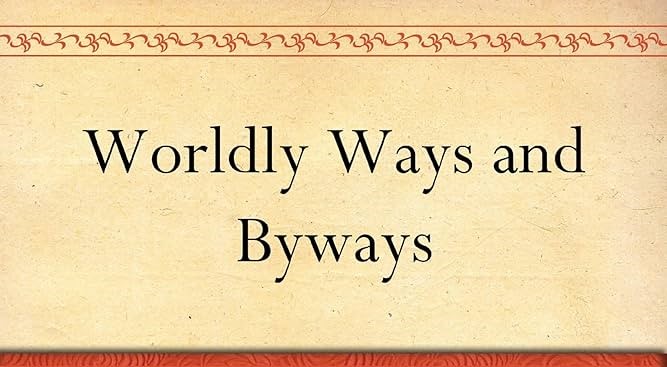Chapter 16 — A Holy Land
byChapter 16 – A Holy Land traces a heartfelt journey through a landscape once sacred to the author’s childhood, now reshaped by the hands of progress. This region, near Grant’s tomb, affectionately called the “Holy Land,” wasn’t just a patch of ground but a canvas for youthful wonder and familial memory. It brimmed with stories—some imagined, others historical—that gave texture to long summer days. From a wooden house said to have hosted Washington to the sweeping view of the Hudson and Palisades, the area served as both playground and sanctuary. The beauty was not just visual, but emotional—a place where memory and history held equal footing. But as Riverside Drive carved its path across the terrain, those clear vistas and open spaces became obstructed, replaced by stone and asphalt that buried not just land, but sentiment.
Chapter 16 – A Holy Land doesn’t mourn the past blindly—it presents a poetic reckoning with how development erases more than just views. The once elegant house of General Gage, credited with bringing the “Queen Claude” plum to American soil, is now coated in jarring mustard paint, its dignity further wounded by a Mansard roof. What was once a living relic has been reduced to architectural confusion, a visual metaphor for how historical essence is often paved over by aesthetic ignorance. Similarly, a visit to Audubon’s former home once inspired reverence and quiet curiosity about the fate of his in-folios, yet the house’s preservation seems uncertain, echoing a broader neglect of legacy. These reflections speak to a recurring theme—progress, while necessary, often arrives without memory. It rebrands places without understanding their roots, transforming landmarks into backdrops for convenience and speed.
Chapter 16 – A Holy Land also touches on the moment that transformed mere land into hallowed ground—a childhood discovery of an Indian chief’s burial site during garden renovations. This event, seemingly minor, instilled a lasting respect for the land and awakened a curiosity about its deeper past. Unlike the layers of colonial and patriotic history usually celebrated, this was something older, quieter, yet just as significant. It introduced a reverence that went beyond family lore or architectural legacy—it spoke to a vanished world predating city lines and boundary fences. In that grave, the author found not only bones but a symbol of everything that had been replaced, erased, or forgotten. It became a personal altar, an invisible monument that no road or builder could ever truly reach.
Across the river, the site of the Hamilton-Burr duel looms as another memory carved into the banks of history, now hidden behind the progress of an indifferent present. Though the duel itself marked one of America’s most infamous personal and political conflicts, its location now lies quietly obscured, its importance unmarked for many who pass by unaware. This juxtaposition between memory and neglect strikes at the chapter’s heart—what happens when the places that held our stories are changed beyond recognition? The author doesn’t simply long for the old structures; he longs for the feeling they once carried, the unspoken sense of continuity between self, place, and past. Without those anchors, identity risks becoming adrift, unmoored from what once defined it.
Chapter 16 – A Holy Land becomes more than a meditation on geography—it’s a lament for a fading intimacy with history. The land once told stories, not through plaques or museums, but through its untouched contours, its trees, and its worn porches. Each corner turned, each stone uncovered, offered a thread back to something meaningful. With development came efficiency, but also silence—the kind that settles when layers of meaning are scraped away and replaced with something blank. Though buildings remain, they feel hollow, no longer echoing the voices of those who once walked their halls. And yet, the memory persists. The author clings to these images not out of nostalgia, but from an earnest belief that the past lives in us when we remember where it lived in the world.
This tension between memory and modernization is not unique to one neighborhood. Around the world, historic districts are altered to accommodate growth, often at the expense of cultural preservation. According to the National Trust for Historic Preservation, once a historic site loses its original landscape or structure, its interpretive power diminishes drastically. This truth echoes throughout the chapter—modern cities are not just built over ruins; they’re built over stories. And without careful balance, the very soul of a place is at risk of vanishing beneath concrete and glass.
Chapter 16 – A Holy Land closes with a quiet resilience. Despite the transformation, the land still holds meaning—not because it remains unchanged, but because someone remembers what it once was. In that act of remembrance, the past breathes. The Holy Land isn’t just a childhood territory—it is a metaphor for how personal identity intertwines with physical space. Though time moves forward, memory refuses to yield, creating a sacred space in the mind where all is still as it was, untouched and full of life.


